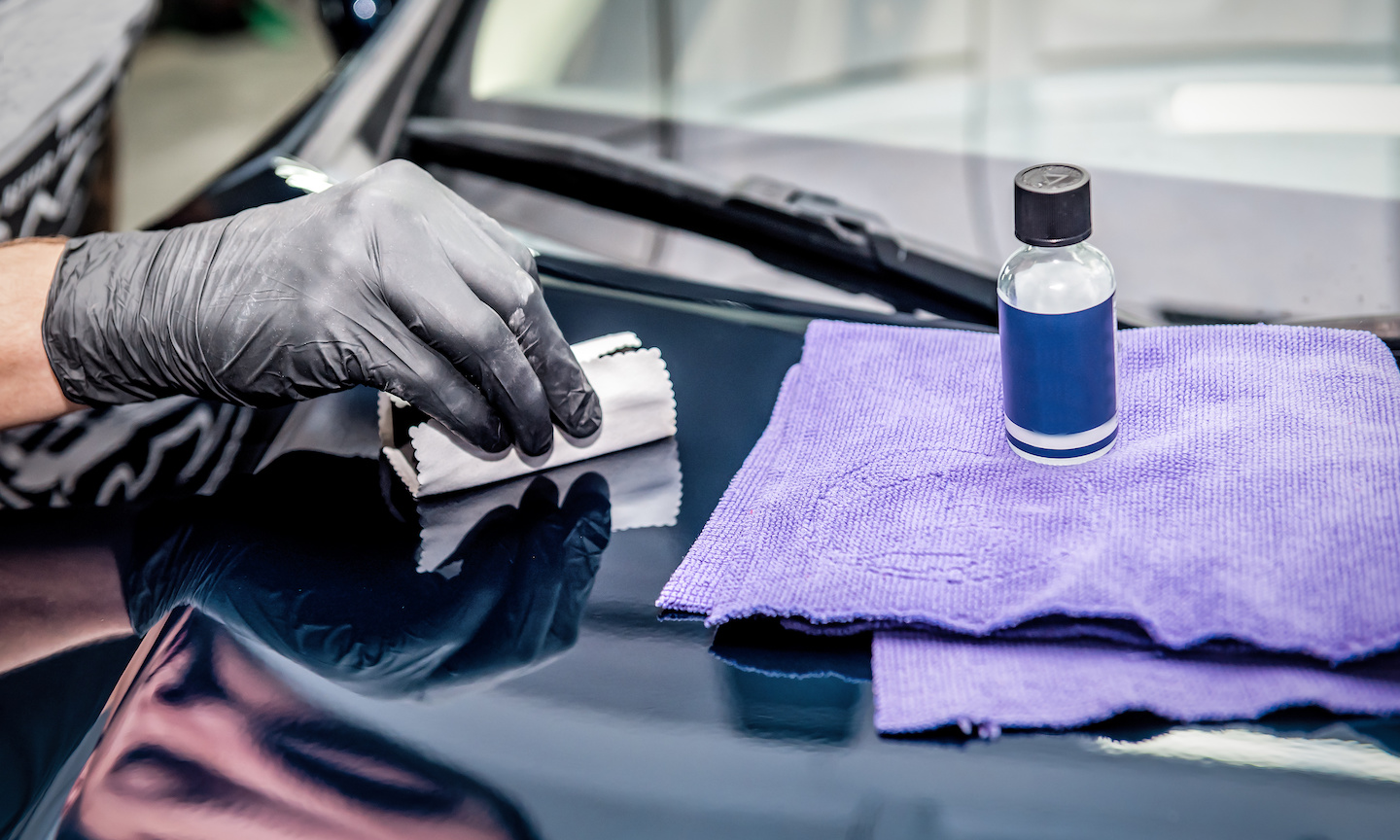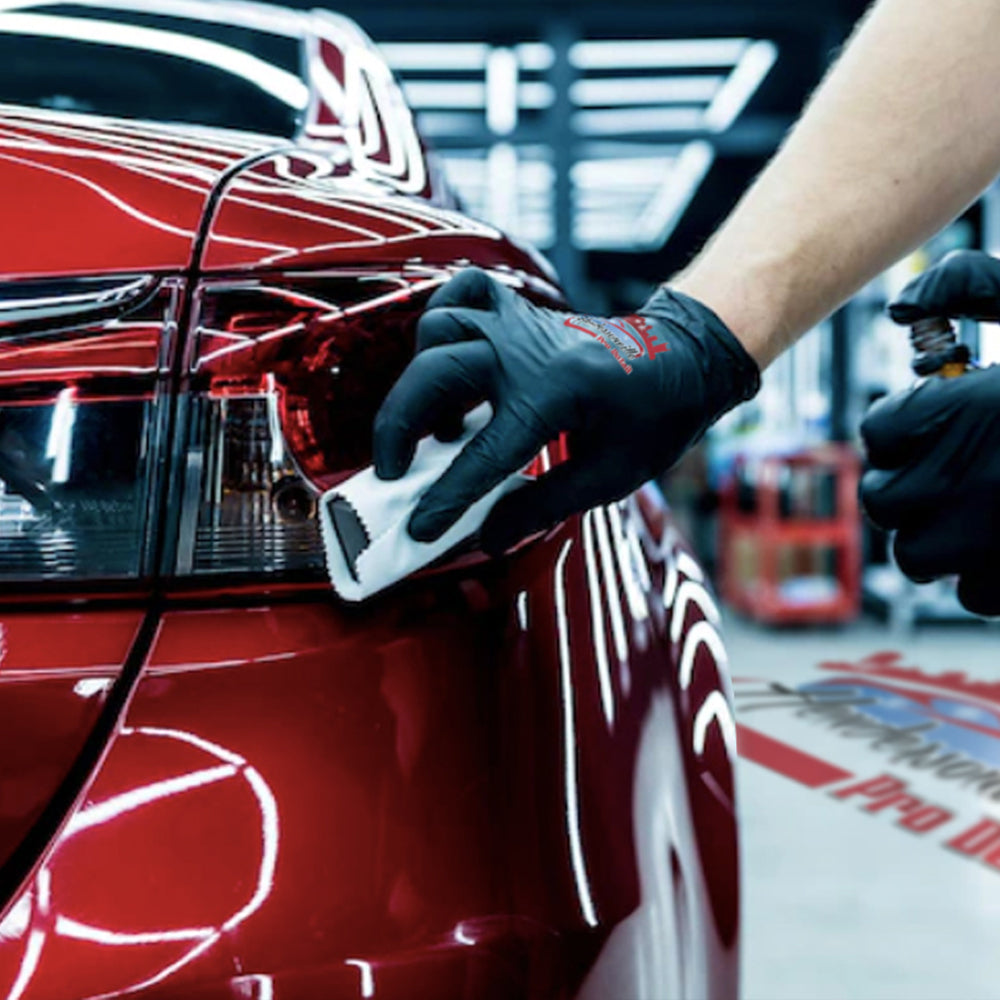Why Ceramic Finish Is the Best Selection for Long-Lasting Shine and Toughness
Ceramic coating has become a remarkable alternative for those looking for to boost their vehicle's appearance while guaranteeing lasting security. Its special formula enables it to develop a solid bond with the paint, producing a durable barrier versus ecological components. Unlike typical wax, which calls for constant reapplication, ceramic coatings offer an even more lasting remedy that keeps a high gloss surface gradually. This conversation will certainly check out the different benefits of ceramic coverings, exactly how they compare to conventional wax, and the most effective practices for application and maintenance, leaving one to take into consideration the implications for their very own automobile care approach.
What Is Ceramic Finishing?
Ceramic coating is an innovative safety layer applied to the exterior surface areas of cars, designed to boost both radiate and sturdiness. This innovative remedy includes a liquid polymer that chemically bonds with the automobile's manufacturing facility paint. The result is a resistant finishing that provides exceptional protection against ecological pollutants, such as dust, UV rays, and chemical compounds.
Typically made up of silicon dioxide (SiO2), ceramic coverings develop a hydrophobic surface that pushes back water and helps with very easy cleaning. Unlike standard waxes or sealers, which offer short-lived protection, ceramic finishes offer resilient results, considerably expanding the lifespan of the car's paintwork. Quality Detail Ceramic Coating. The application procedure requires careful prep work, including extensive cleaning and decontamination of the automobile surface area to guarantee ideal attachment
When used, ceramic layers treat to create a durable layer that improves the lorry's aesthetic appeal, supplying a shiny coating that enhances the depth of color. This sophisticated innovation not just shields the car's exterior yet additionally aids to keep its worth over time. Because of this, ceramic covering has ended up being a favored option among vehicle lovers and experts looking for remarkable security for their automobiles.
Advantages of Ceramic Finish
The benefits of using a ceramic finish expand well past plain aesthetic appeals, offering car owners with substantial long-term advantages. Among one of the most considerable advantages is improved protection versus environmental contaminants. Ceramic coatings produce a hydrophobic surface that wards off water, dust, and gunk, making it less complicated to maintain a tidy automobile while decreasing the frequency of cleans.
In addition, ceramic finishes supply superb resistance to UV rays, which can trigger fading and oxidation of paint over time. By protecting against these unsafe impacts, ceramic coverings aid protect the vehicle's initial color and coating, eventually expanding the life expectancy of the paint.
Moreover, the durability of ceramic layers is notable - Quality Detail Ceramic Coating. Unlike typical wax, which may call for reapplication every few months, ceramic layers can last a number of years with proper maintenance. This long life translates to set you back savings for lorry owners, as they invest much less on reapplication and outlining solutions
Lastly, ceramic finishes provide a shiny finish that improves the overall appearance of the published here lorry. This long-lasting sparkle not only raises the vehicle's aesthetic allure but likewise adds to its resale value. In recap, the advantages of ceramic finishes are complex, offering considerable defense and aesthetic enhancements for automobile proprietors.

Comparisons With Standard Wax
When comparing ceramic layers to conventional wax, numerous essential distinctions arise that highlight the benefits of modern-day protective modern technologies. Traditional wax, typically derived from natural carnauba or artificial products, provides a fairly brief sparkle, usually lasting only a couple of weeks to a few months. In contrast, ceramic finishings provide a more long lasting service, lasting numerous years when appropriately maintained.
The chemical make-up of ceramic her latest blog finishes develops a covalent bond with the automobile's surface, producing a durable guard versus ecological impurities, UV rays, and chemical etching. Traditional wax lacks this level of bonding, making it much more prone to put on and destruction from warmth, dampness, and unpleasant products.

Application Process of Ceramic Covering

First, the automobile's surface area have to be extensively cleaned and sanitized. This consists of cleaning, claying, and possibly polishing to eliminate any flaws or residues that might conflict with bond - Quality Detail Ceramic Coating. After cleaning, it is vital to dry out the surface area entirely, as any kind of dampness can endanger the layer's performance
Following, the ceramic layer is used in tiny areas utilizing a specialized applicator. It is crucial to operate in regulated conditions, preferably in a shaded area to avoid premature curing triggered by sunshine. The finish is spread out uniformly and enabled to bond with the surface, forming a chemical bond that supplies premium protection.
After application, the finish calls for a curing duration, which can vary depending upon the product utilized. During this time, it is essential to stay clear of exposure to water and contaminants to allow the layer to establish appropriately. Proper application not only boosts the car's aesthetic allure however also makes certain enduring protection versus ecological elements.
Maintenance Tips for Durability
Keeping a ceramic covering is crucial for preserving its sparkle and safety high qualities gradually. Regular maintenance makes sure that the coating proceeds to repel pollutants and keep its hydrophobic residential properties.
To begin, wash your automobile frequently using a pH-neutral hair shampoo to stop the buildup of dirt and crud. Stay clear of abrasive materials that might jeopardize the layer; instead, select microfiber clean gloves and soft drying out towels. In addition, employing a two-bucket wash method can reduce the danger of view it now scrapes.
After cleaning, take into consideration using a maintenance spray made specifically for ceramic coverings. This can improve the finish's hydrophobic features and boost its gloss. It's additionally advisable to on a regular basis check the finish for any kind of indicators of destruction or damages, resolving issues promptly to avoid further wear and tear.
Avoid vehicle parking under trees or in direct sunlight for extensive durations, as impurities like sap or bird droppings can hurt the finishing. Take into consideration expert describing every 6 to twelve months to invigorate the ceramic layer, ensuring it continues to be reliable and aesthetically appealing. By adhering to these straightforward upkeep tips, you can maximize the durability and efficiency of your ceramic finishing investment.
Final Thought
In summary, ceramic finishing becomes a superior option for car security, offering boosted resilience and a long-term sparkle contrasted to traditional wax. Its distinct chemical residential properties create a durable obstacle versus ecological contaminants, UV rays, and oxidation, dramatically prolonging the visual allure and worth of the automobile. The minimized requirement for frequent reapplications better emphasizes the cost-effectiveness of ceramic finishes as a sensible option for automobile treatment, ensuring long-term contentment for automobile proprietors.